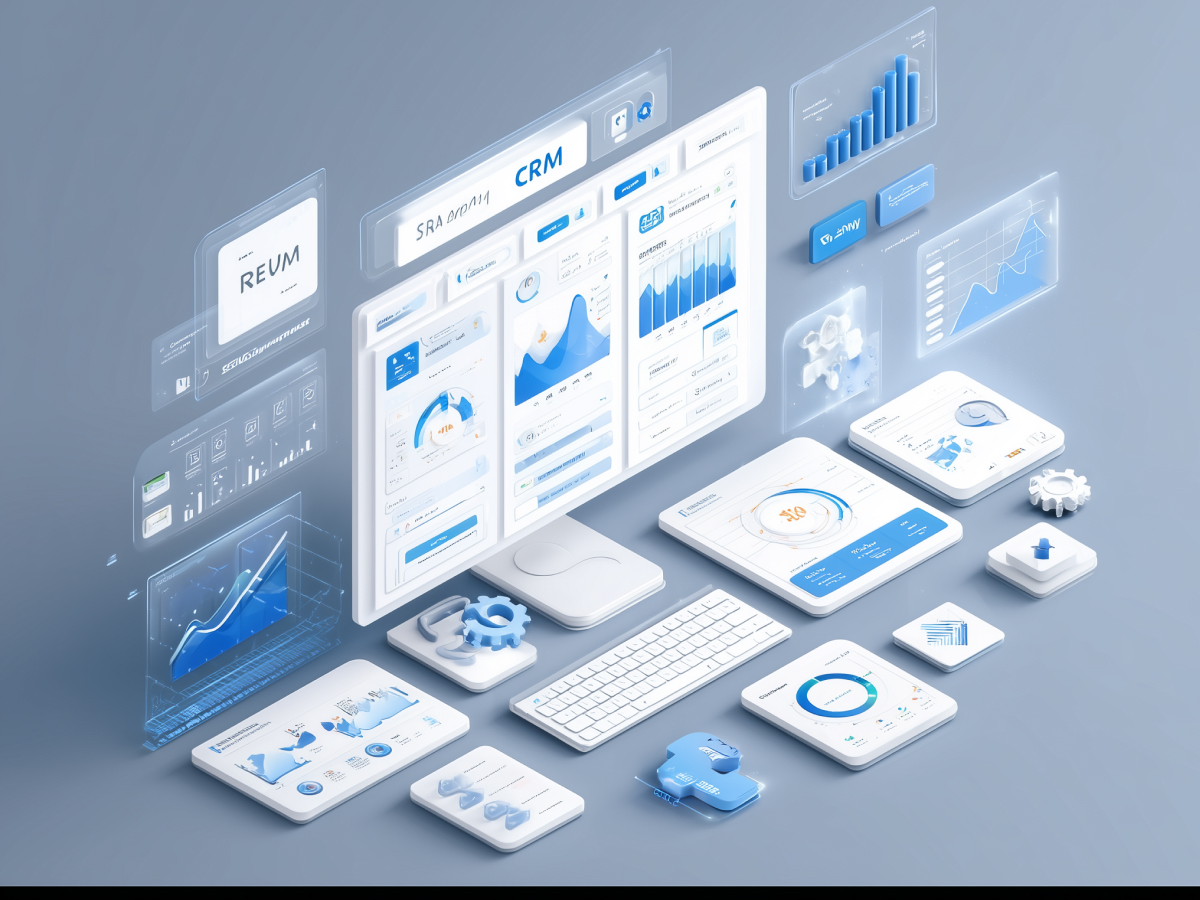How AI-washing fools us and who’s behind it
AI-washing is the practice of falsely marketing a product as AI-driven when, in reality, the technology behind it is either minimal or non-existent.
Companies exploit the current enthusiasm surrounding AI by tagging their products with AI claims, making them appear more innovative and advanced than they are. This misleads both customers and investors, and creates a perception of cutting-edge technology where it doesn’t exist.
The result? Customers and investors put their trust—and their money—into products that don’t deliver on AI’s true potential. For instance, companies have been accused of presenting simple rule-based software or basic algorithms as AI solutions, despite lacking the complex machine-learning capabilities that define genuine AI.
Like greenwashing in the environmental space, AI-washing can inflate the perceived value of products or services.
AI-washing capitalizes on the gap in understanding AI’s capabilities. Many businesses and consumers are not well-versed in how AI works, leaving them vulnerable to overblown claims. This goes on to undermine trust in AI technologies and slows the overall progress of AI adoption by pushing attention toward hype instead of real innovation.
How governments are fighting AI-washing and holding companies accountable
Regulatory bodies have started cracking down on companies that exaggerate their AI claims. The U.S. Securities and Exchange Commission (SEC) has taken a strong stance on this issue, fining companies like Delphia and Global Predictions $225,000 and $175,000, respectively, for inflating their AI-related promises.
Heavy penalties point to the growing regulatory focus on making sure AI-related marketing is transparent.
In Europe, the 2024 AI Act is a landmark regulation that sets stringent global standards, especially in high-risk AI applications, such as decision-making processes in healthcare, hiring, or law enforcement. The act aims to prevent the spread of AI-washing by demanding clear accountability from companies using AI in critical sectors.
Adding to this, the United Nations formed an AI Advisory Board in 2023 to create global agreements on AI governance—intended to guide international cooperation and prevent the misuse of AI claims by companies across borders.
Combined global efforts show that regulators are serious about addressing AI-washing before it undermines consumer trust in AI technology all around the world.
The three main reasons AI-washing has taken off
1. Marketing teams oversell AI capabilities beyond reality
In the race to stand out in competitive markets, companies frequently exaggerate the extent of AI capabilities in their products. Many marketing teams often lack the technical expertise to understand AI fully, leading to claims that stretch the truth.
As AI becomes a buzzword, adding it to product descriptions can boost visibility, even when the AI component is either minimal or inconsequential to the product’s core functionality.
2. Overblown AI stories in the media create unrealistic expectations
Media outlets contribute to the hype by publishing sensationalist stories about AI’s potential to take over entire industries or make flawless decisions. These narratives lead to public misconceptions about AI’s current capabilities, making consumers more susceptible to believing companies’ inflated AI claims.
For example, headlines about AI-driven facial recognition systems often overlook the bias and accuracy issues these systems face, resulting in an inflated belief in AI’s reliability.
3. Companies are inflating AI claims to pull in investors
Companies frequently exaggerate their AI adoption to attract investor attention, similar to past trends seen with NFTs or cryptocurrency.
Brands like Louis Vuitton and Dolce & Gabbana profited by selling digital fashion items with unclear long-term value during the NFT boom. In a similar manner, cryptocurrency firm FTX collapsed after its founder, Bankman-Fried, was accused of inflating the company’s financial health.
AI-washing is holding back true innovation and progress
AI-washing doesn’t just affect consumers—it limits technological progress by diverting investment away from real innovations.
A striking example of this is the Theranos scandal, where the company falsely claimed it could revolutionize blood testing with a single drop of blood. After 12 years of development and $700 million in investments, the technology was proven fraudulent, wasting vast resources that could have supported legitimate healthcare innovation.
Companies that overstate their AI capabilities siphon resources from truly innovative ventures that could drive genuine advancements in AI.
When investors and companies focus on products that don’t live up to their AI claims, the industry stagnates. The overhyped, non-innovative products clog the market, creating skepticism and potentially damaging the reputation of genuine AI solutions.
AI-washing makes companies waste money on fake tech
Businesses risk wasting considerable resources on AI-washed products that don’t fulfill the promised capabilities. Through investing in tools that fail to deliver meaningful AI-based outcomes, companies miss opportunities to implement technology that could boost productivity and efficiency.
For instance, organizations spending on ChatGPT licenses for basic functions, like advanced searches, might find more value in investing in a tailored AI solution designed for their specific needs.
Misallocated funds should be seen as more than a financial loss as it slows down operations as businesses try to retrofit these tools into their workflows. Instead of adopting customized, purpose-built AI systems, companies end up with underwhelming products that fail to meet their demands.
Why transparency is key when AI makes important decisions
The lack of transparency in AI-labeled products can have far-reaching consequences, especially in areas like hiring and law enforcement. AI-washed tools, which rely on basic algorithms rather than advanced machine learning, may produce flawed decisions that impact people’s lives.
In hiring, for example, some companies use tools marketed as AI-driven to filter candidates based on keyword matching. These tools may unfairly exclude qualified candidates with non-traditional resumes or gaps in employment history.
Without transparency, companies may not even realize that their hiring processes are biased or inaccurate.
In law enforcement, the misrepresentation of AI’s capabilities can have even more serious repercussions. If AI systems used for crime prediction or facial recognition are not as advanced as claimed, their inaccuracies could lead to wrongful arrests or overlooked suspects.
How to tell if a product’s AI claims are real or fake
The key to identifying AI-washing is understanding the difference between genuine AI products and those that only claim to leverage AI. Through comparing similar products, it becomes easier to distinguish true AI-powered solutions from those that merely use buzzwords.
How real AI tailors experiences vs. fake personalization
A genuine AI-driven app for managing diabetes will use machine learning algorithms to track a user’s health stats, such as insulin levels, and recommend meals based on both their dietary preferences and current condition. This requires advanced data processing and real-time decision-making to provide accurate, personalized suggestions.
In contrast, a product that claims AI-driven personalization but only uses location data and generic dietary guidelines offers little more than basic rule-based outputs. It lacks the sophisticated, real-time adaptation needed to genuinely cater to individual users’ needs.
Spot the difference between true AI predictions and fake forecasts
In personal finance, a legitimate AI tool will analyze not just a user’s transaction history but also external economic factors such as inflation or commodity shortages. Through using time-series forecasting and machine learning models, the system can offer personalized budgeting advice that adapts to real-world changes, like a predicted increase in coffee prices due to drought conditions.
A product that claims predictive capabilities but simply categorizes past expenses without accounting for future events is engaging in AI-washing. These rule-based systems lack the advanced forecasting ability that true AI solutions provide.
How real-time AI data crunching stacks up against fake claims
In logistics, a delivery company that uses real-time traffic and weather data to update package arrival estimates employs genuine AI. Such systems integrate data from various IoT sources and apply regression models to continuously refine delivery time predictions. This level of dynamic analysis requires both high computational power and machine learning expertise.
A company that bases its delivery estimates solely on historical data, without real-time adjustments for unexpected events, is overstating its AI capabilities. While historical averages can offer baseline predictions, they fail to account for disruptions like weather events or traffic accidents.
Protect innovation by calling out AI-washing and driving change
Educating consumers about AI is the most effective way to reduce the influence of AI-washing. When consumers can discern between genuine AI products and those that misuse the term, deceptive marketing practices lose their power.
This requires more transparency from companies as well as proactive efforts to raise awareness of AI’s true capabilities and limitations.
Unchecked AI-washing can lead to wasted investments, slower technological progress, and a lack of transparency. Through promoting accountability and supporting responsible AI development, the industry can make sure AI innovations benefit society as a whole.
Guarding AI’s future requires a collective effort from businesses, regulators, and consumers to call out false claims and encourage genuine advancements.
Collaboration between regulators and tech companies is the key to transparency
To combat AI-washing, governments, tech companies, and industry regulators must collaborate. As seen with the term “big data,” establishing clear definitions and classifications for AI can help consumers and businesses make informed decisions. Collaboration leads to better industry standards and prevents the misuse of AI terminology.
Final thoughts
As the buzz around AI continues to grow, brands must critically evaluate their own narratives. Are you genuinely leveraging AI to drive innovation, or are you riding the wave of hype with inflated claims?
Consider how your approach to AI can either elevate your brand or risk it falling into the trap of AI-washing. Reflect on this: What steps will you take today to make sure your brand stands out through authenticity and true technological advancement in an ever-evolving market? Your future success may depend on it.




